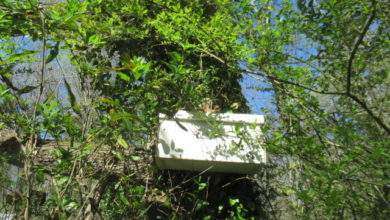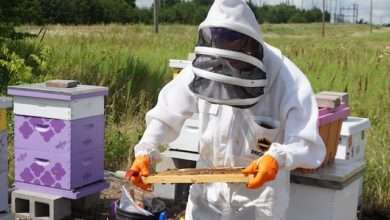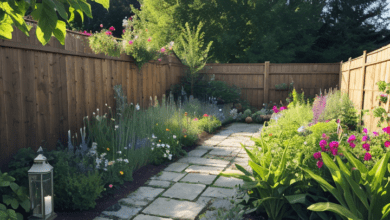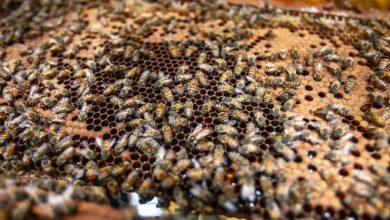Should You Create a Water Feeder for Your Bees?

Watering Feeder for Bees
Like all other species, honey bees need a constant water supply throughout the year. Bees need reliable water supplies that won’t dry up in the summer, won’t drown the bees, and won’t be used by other animals.
Although honey bees like a refreshing dip in a saltwater pool, it’s best to have a reliable water supply before your colony starts driving away the swimmers.
Honey bees utilize water for more than just hydration. During the colder months, honey bees often utilize water to dilute honey that has thickened and to dissolve honey that has crystallized.
In the heat, they would fan their brood comb after spreading water droplets along its borders. The fast flapping of the wings creates air currents that carry away the moisture and maintain a comfortable temperature in the nest for the developing young bees.
What Honey Bees Gather
Foragers in a thriving honey bee colony typically return four foods after excursions. The bees will gather nectar, pollen, propolis, and water as necessary for the colony. The bees’ rear legs have pollen baskets where they store pollen and propolis, while the bees’ crop is where they store water and honey.
A bee will often make the same collection throughout the day. So, after delivering her cargo to a worker hive, a bee with a water supply will return to the source to replenish her reserves. However, there are situations when a forager can’t locate a house bee to receive her drink. If that occurs, she knows the colony has enough water and may shift her attention to other necessities.
Water that would normally make humans exclaim “Eww!” is a popular choice with honey bees. A sluggish ditch, a slimy flower pot, a muddy mole hole, or a heap of soggy leaves may all be attractive options.
Unfortunately for those who maintain bees in the country or their backyards, bees are also drawn to the scent of salt and chlorine, which are often used to treat swimming pools. Providing pristine water for your bees may seem sensible, but they’ll likely need to pay more attention to it.
Bees Prefer Sweet-Tasting Water with a Certain Odor
Thinking like a bee will help you choose the optimal water sources for your hive’s bees. Even though bees have five eyes, they are better at picking up on lighting and motion changes than picking out fine details. Furthermore, bees fly high and rapidly, which might cause them to miss water supplies.
Biologists have hypothesized that bees rely more on their sense of smell than their eyesight to locate water sources, which would explain why such sources would be more appealing if they had a fragrance. Bees are more likely to be drawn to water with less than fresh aroma, such as that of moist soil, moss, aquatic vegetation, worms, decomposition, or even chlorine.
Sources of water that are particularly slimy or smelly can contain a wide variety of nutrients. Although nectar and pollen provide most of a honey bee’s nourishment, several water sources are particularly high in vitamins and micronutrients and may provide a nutritional boost.
Protect Your Bee Watering Station
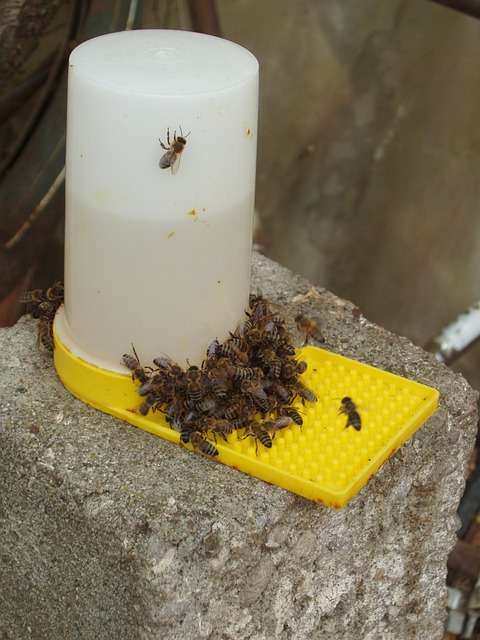
Bees also want the solid ground to land on. Bees are susceptible to drowning in fast-moving water or water coined inside a container with steep sides. Beekeepers have developed several bee drinking stations to address this issue.
For a cheap and easy DIY bee watering station, try using a saucer and filling it with marbles or stones. It’s just as effective to use a pail of water with plenty of “bee rafts.” Anything that floats will do; use corks, sticks, sponges, or even packing peanuts.
If you’re a gardener, you could have a leaking hose or an irrigation head that drips slowly and can be relocated to an out-of-the-way spot so the water can soak into the soil. While some utilize lily pad-lined small ponds or water-filled hummingbird feeders, others still employ small ponds.
Neighbors
Even if you create elaborate water features to attract honey bees to your property, the bees may still choose your neighbor’s. Your bees could also become interested in the pet dish, horse trough, potted plant, birdbath, or, worst of all, the pinned-up clothes of your next-door neighbor.
When bees locate a good food supply, they tend to stick around. You will need more time to convince your bees to switch sources. Thus, it is in your best interest to provide them with a source before they discover one on their own.
Location, Location, Location
To gather food and water, honey bees will fly great distances. In most cases, a colony will stick to a few miles radius while venturing out to find food. The exception to this is when nectar and pollen are few; then, a bee may go as far as five kilometers to get them. This is not ideal since she may need more money for the trip if she has to utilize what she gathers there. In a nutshell, the greatest places for bees to get water will be near the hive.
However, the dance language used by bees to relay information about the location of supplies is most effective when the item in question is some distance from the hive.
A bee may indicate the source is near something just a few feet away, but she has difficulty pinpointing its specific location. Assuming it is a fair distance away, she can point you in the right direction. The bee waterer should be placed a short distance from the hive, perhaps 100 feet away, rather than directly underneath it.
Inviting Honeybees to Your Water Feeder
A chlorine surge might be helpful when initially establishing a water supply. To attract bees, try mixing a teaspoon of bleach with a pail of water. To attract bees, some beekeepers put a handful of crushed oyster shells in a pie pan of water. This gives the water a somewhat saline, oceanic aroma. Alternatively, you may use a bee waterer with a mild sugar solution. The bees will swiftly eat through it and return for more once they discover it.
As soon as the bees grow acclimated to the source, you may cease adding the attractant, whether it is chlorine, salt, or sugar. The water will be water to them after a few days, and they will have “forgotten” what was there. Setting up a routine for your bees as soon as they arrive can help prevent them from learning harmful routines.
FAQ
How do you construct a feeder that holds water?
A pan or shallow bowl with a healthy helping of stones, pebbles, or marbles is all that’s needed to make a simple but effective water filter. The bees will like having a safe place to land among the rocks and trinkets and won’t have to worry as much about drowning. Every week or so, you should replace the water to prevent the eggs from hatching and spreading to other insects.
How can we ensure that bees have access to clean water?
Since bees are so little that they may quickly drown in water, a shallow dish containing heavy objects like boulders or marbles is recommended. Maintain a lower water level than the surrounding rocks to provide a landing spot for the boys. Likewise, check to see that the dish of water you leave out for the bees hasn’t been tainted with pesticides.
Where would you place it if you set up a bee-watering station?
Before installing the watering station, choose a site that people will see but is outside the way of the main walkways. Putting it in your garden near the flowers bees can attract them to your water supply.
Will bees drink from a fountain?
Bees prefer running water over still water because the former poses less of a threat of drowning. It’s very uncommon for me to see them settling around, or even landing on, fountains that make a very soft trickling sound. Alternatively, you may have fountains that empty into a rock-filled grate.
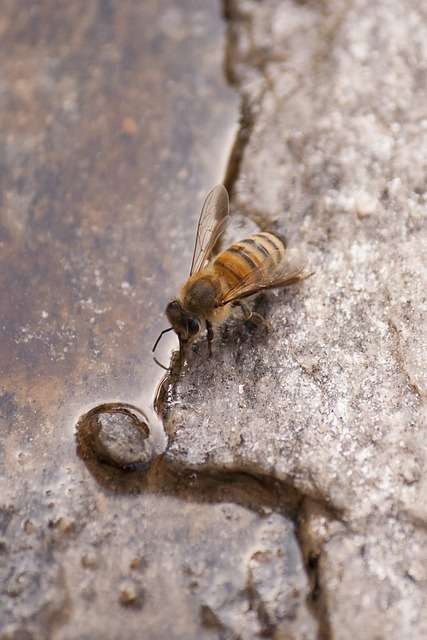
Can bees be lured to a sugar water dish?
When the sugar syrup is left out in the open, it attracts bees from nearby colonies and your own. When they go, they tell their neighbors about the free food, and soon you have a swarm of bees buzzing over your patio.
How can you get bees to visit your bee waterers?
Our observations have shown that bees are more attracted to somewhat murky water with some plant growth. Small amounts of lemongrass oil or salt added to your bee waterer can also aid the colony in finding the water source. Wait a few days after the bees have found your water supply, and then you may discontinue using the attractant.
Do mosquito breeding grounds develop near bee hives?
If you have a bee colony, providing these modest water sources may help them maintain a comfortable temperature in the hive and deter them from visiting your neighbor’s pool or bird bath. These containers’ lack of regular maintenance might make them a mosquito breeding ground.
If bees become wet, do they die?
The bee is wasting its time and energy with this method. Until the bug can reach land, it will use the exhausting survival method of swimming kicks on to stay alive. They risk drowning if they are too far from help.
